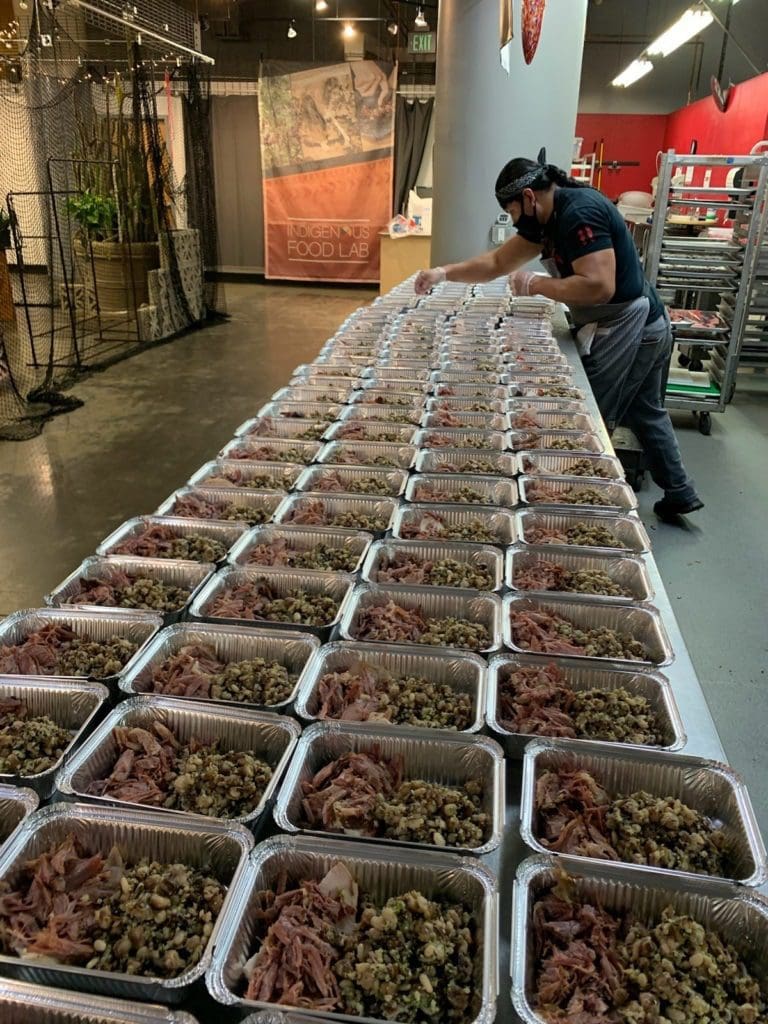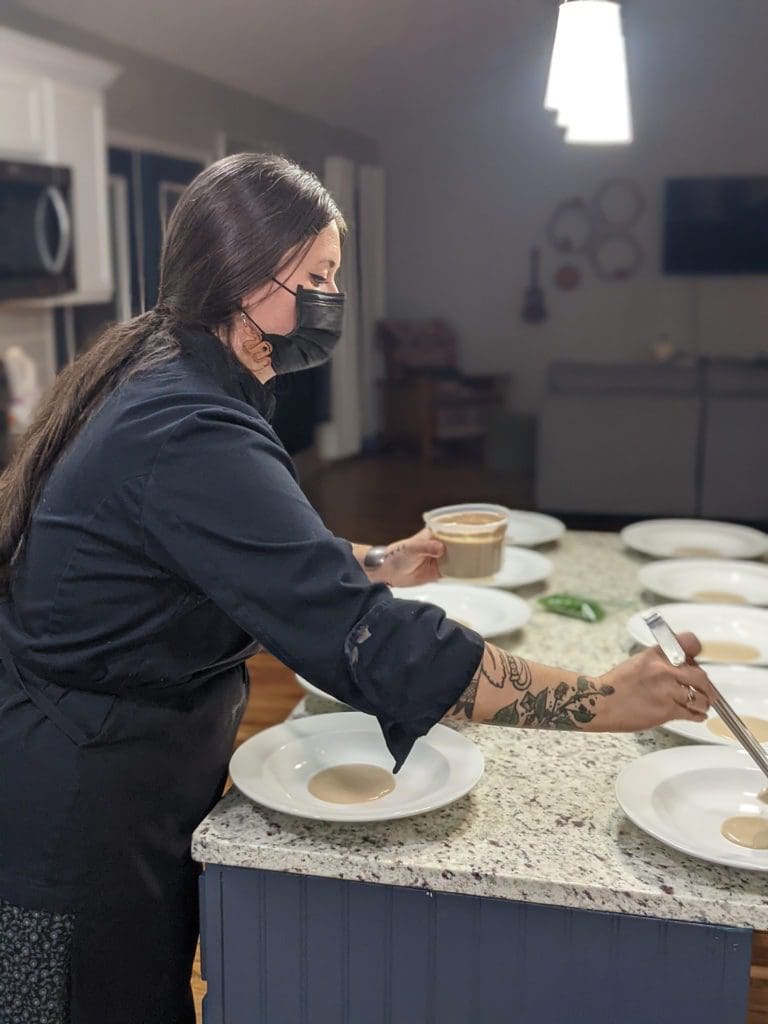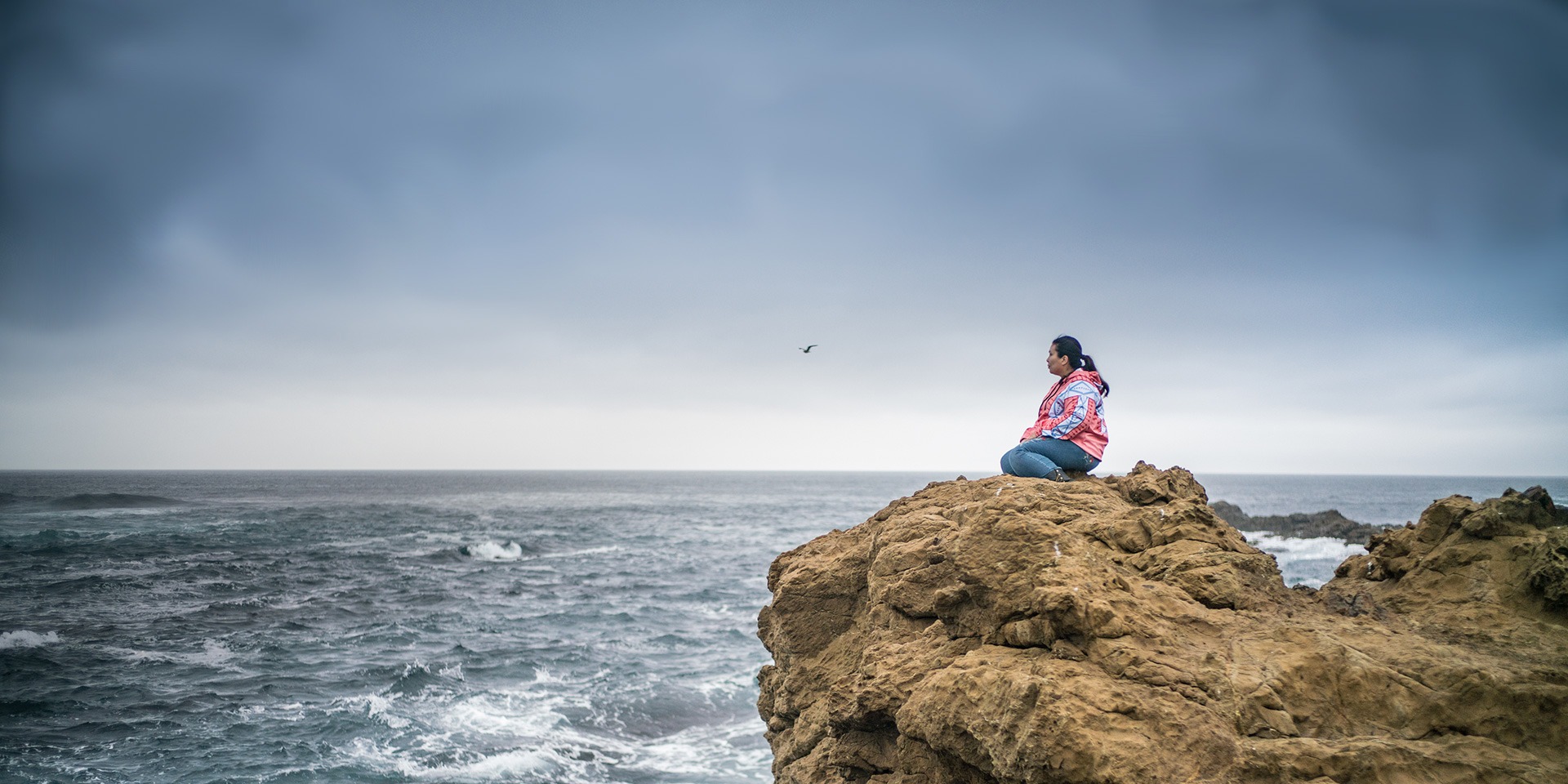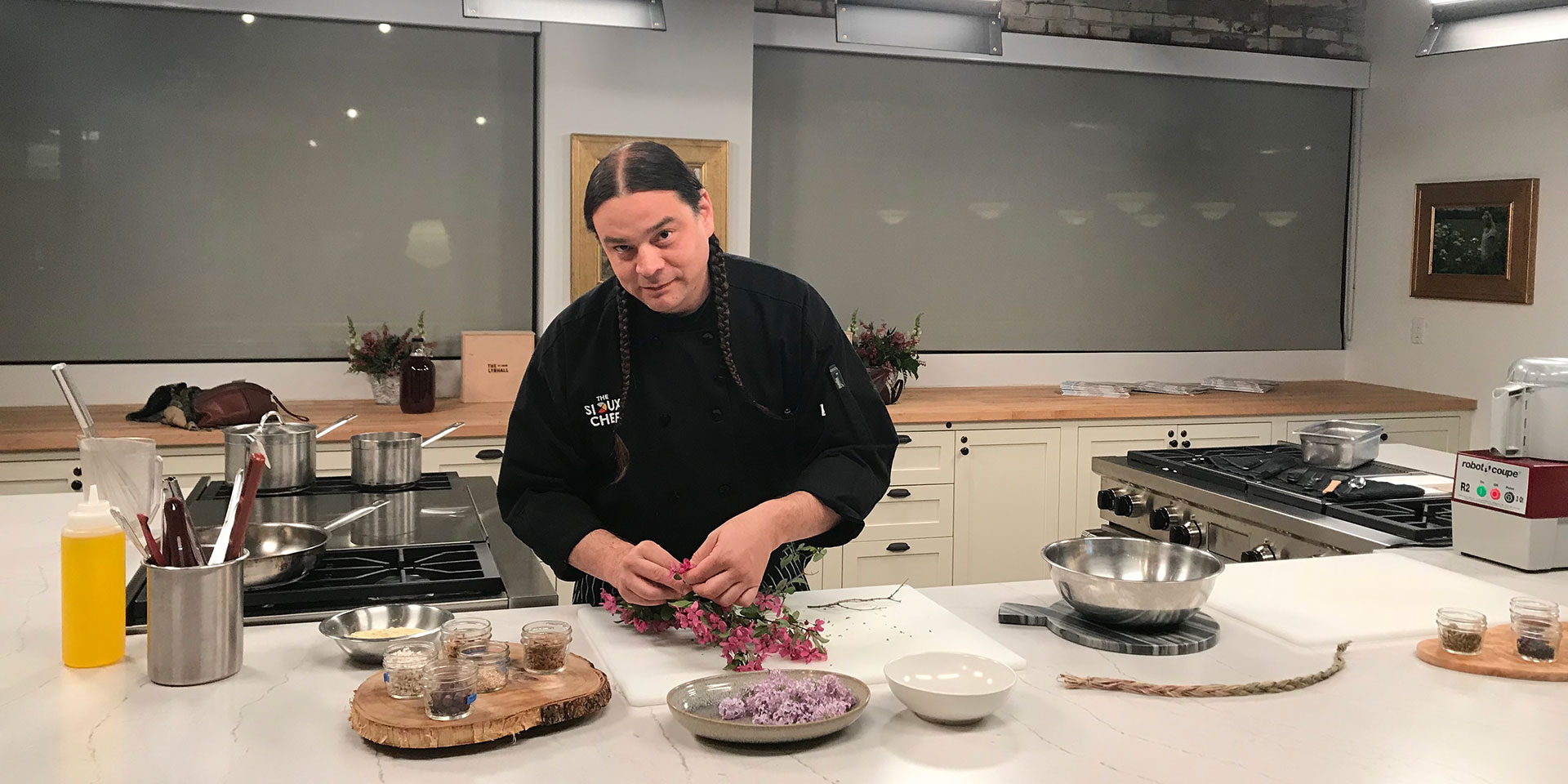This Thanksgiving, learn about Indigenous foodways past, present and future
For Native Americans, the time period from Columbus Day (officially recognized in 14 states and Washington, D.C., as Indigenous People’s Day) through November (Native American Heritage Month) is shrouded in loss, generational trauma and hard conversations. Many acknowledge the fourth Thursday of November as the National Day of Mourning.
Although the myth of the first Thanksgiving is no longer commonly accepted, the idea of gentle, welcoming Natives and English pilgrims enjoying a meal together still lingers. “That story was force fed, and people need to understand that these harmful stereotypes are not good for Indigenous people,” says Dana Thompson, co-founder of the nonprofit North American Traditional Indigenous Food Systems (NĀTIFS). “They are not good for us as a society either.”
As part of unlearning narratives like this, we must acknowledge that the history of Thanksgiving is intertwined with a history of colonial violence. Non-Natives can also take the holiday as an opportunity to engage with and educate themselves on the country’s living Indigenous cultures. Just as food is at the center of the Thanksgiving tradition, food is a site of resistance and renewal for Native communities around the U.S. — and that’s certainly something worth celebrating.
Restoring Indigenous foodways
Many Indigenous communities lack equal access to medical care and healthy food, having been cut off from their traditional diets, lifestyles and practices through the systems of colonialism and oppression in the U.S. Organizations like First Nations Development Institute are fighting to reverse this cultural erosion. First Nations awards grants to support Indigenous farmers, increase food access and help tribal governments rebuild their sustainable food systems.
“When grocery stores are closed, quantities are limited, and the supply chain is threatened, a return to Native foods can be the difference between sickness and health,” First Nation’s A-dae Romero-Briones wrote in a 2020 essay for FoodPrint. “And a recognition and celebration of Native foodways can be a factor in how people find nutrition and nourishment.”
For Minneapolis-based NĀTIFS, the focus is on food entrepreneurship and education. Many Indigenous Americans have lost their connection to traditional recipes and food customs, “and it’s critical that we’re able to put that knowledge back together in a modern context,” says Thompson, “so that people can keep doing the research on their own ancestral foods, the foods of their grandparents and great grandparents, essentially.” Over the last several years, the NĀTIFS team has been working with local tribal nations to preserve and promote the culinary heritage of the area.

Photo by Dana Thompson.
In 2020, NĀTIFS was planning to open the Indigenous Food Lab, a culinary training center where Indigenous people from all over the country could learn these food traditions and bring them home. When the pandemic stalled the center’s opening, the Food Lab team got to work. In response to the rise in food insecurity and the murder of George Floyd, the staff began training a team of 15 cooks and preparing meals for nearby tribal communities.
“We are trying to kick out a thousand meals a day to feed the tribal communities around us,” Thompson told FoodPrint in 2020. Dishes, which featured ingredients from Indigenous producers such as Ramona Farms, included bison and hominy stew, smoked duck pozole and walleye cakes with pepita pesto. “Every single one of these recipes,” Thompson explained, “is packed with foods that are truly anti-inflammatory, nutrient-dense and there to really nourish, physically, spiritually, emotionally in every way.”
Understanding true Native American history and food
For Tulsa-based Indigenous chef and consultant Nico Albert, Thanksgiving time is valuable for widening the conversation around the true story of the holiday — and Indigenous people in a modern context. “It’s definitely a conflicted holiday,” she says, explaining that she has many friends who call the holiday “Thanks-taking.” While gathering families together, sharing big meals in fellowship and reflecting on the things you are thankful for generally reflect Indigenous values, Albert explains how important it is to know where the holiday came from.

Photo courtesy of Nico Albert.
“I think a mutual appreciation for everything that Indigenous people have endured [is necessary], in the same way that we have so much education about the intrepid spirit of the pioneers,” Albert says. “We need to balance that out with the incredible resiliency of the Indigenous people of this land, to still exist and still have our traditions.”
Albert teaches cooking classes to the local Indigenous community, with a focus on Native ingredients and techniques — but she also spreads information about Indigenous culture to a larger network, catering dinners, events and corporate retreats. “We get to reach a wider demographic of audience that needs to hear these stories and have questions that need to be answered,” says Albert, who has cooked at Tulsa institutions like the Philbrook Museum of Art. “That kind of builds a bridge between our communities and improves the visibility of Native people in a contemporary context. That’s always excellent.”
One way to build that bridge on your own is learning about the history of the land you live on. Research the Indigenous nations that have been in your area for generations. As chef and NĀTIFS co-founder Sean Sherman told Time magazine, “No matter where you are in North America, you are on indigenous land.”
You can also support Native growers and local organizations working to improve food sovereignty. “I urge people to explore a deeper connection to what are called ‘American’ foods by understanding true Native-American histories,” Sherman continued in the Time interview. Looking at that history, and the Indigenous approach of only using what you need and replenishing what you take, it’s clear that by supporting Indigenous food systems, we can support a more sustainable food system overall.
“There are so many tribes and Indigenous individuals that have different foods and gift items that you can purchase that directly support tribal organizations or a Native individual’s family,” says Albert, “like native rice from the Chippewa people or maple products from some of the tribes in the northeast. When you buy those products, not only are you supporting those people, you are supporting the proper maintenance of that land.” One of her favorites is the Tanka Bar, a bison-berry bar made with ethically sourced bison, based on a staple food used by the Oglala Lakota when traveling. You may not find these ingredients at your local grocer, but Albert links to many Indigenous products on her website.
A meal that centers the Indigenous story
Turkey, cranberries and pumpkin pie have become the nationwide standard on the Thanksgiving table. But these items aren’t seasonally available everywhere, and especially around Thanksgiving are often tied up in the problems of industrial farming and its impact on the environment, public health and animal welfare — issues that directly impact Indigenous communities and foodways.
“There’s no reason food should be traveling for a thousand miles, or that I should be able to buy pineapple in the middle of Minneapolis,” says Thompson. Instead of buying out of season because a recipe calls for a certain ingredient, she suggests looking at the damage caused by factory farms and monocultures, and instead supporting a sustainable, microlocal food system: “I think Thanksgiving is a time to look away from [factory farmed food], figure out where our dollars are spent and make some reparations.”
Albert also suggests purchasing ingredients for your holiday table — such as the cornmeal for your cornbread — from Indigenous producers. “What a great conversation piece for a non-Native family to say, ‘I bought the cornmeal from the Ute people in Utah, or I bought this corn from Ramona Farms in Arizona,’” she explains. “‘The cornbread itself is so much more nutritious, and I supported this tribe, and isn’t that cool?’”
As Sherman explains in a feature for The New York Times, “The true foods of North America may not be available at every grocery store or even online, and they are not coming from industrial farms: They are seasonal and vary from region to region. To experience true Indigenous foods is to explore the many different ecosystems of plants and animals wherever you are.” Even if you can’t source Indigenous ingredients, whether you cook traditional Native recipes, make old standbys or try new recipes , if you center local, seasonal foods, you will be experiencing a more Native meal.
Top photo: Food is prepared at the Indigenous Food Lab in Minneapolis, part of its work providing meals to nearby tribal communities during the pandemic. Photo by Dana Thompson.
More ways to connect
- Advocate for a more inclusive approach to discussing Thanksgiving in your child’s school system.
- Celebrate with traditional foods and recipes from James Beard Foundation Award-winner Sean Sherman.
- Add some Indigenous food products to your pantry.
- Take a moment to honor how many Natives recognize the fourth Thursday of November: as a National Day of Mourning.
- Research the Indigenous land you’re living on.
- Consider donating to organizations supporting Indigenous food sovereignty, such as the Native American Food Sovereignty Alliance and First Nations Development Institute.
More Reading
The racist roots of Black land loss
February 25, 2025
Why worker welfare is critical to truly “sustainable” wine production
January 10, 2025
How we came to rely on emergency food
September 30, 2024
Food and farmworkers need protection from heat and other dangers
August 28, 2024
How can ecofeminism help us envision the future of food?
July 18, 2024
A new agritourism network connects and promotes farmers of color
June 11, 2024
After season 2 of ‘High on the Hog,’ there is more to be told
March 19, 2024
The 'unseen hands' of the food system
February 27, 2024
Why Black-owned farm acreage shrank 80 percent in 100 years
February 1, 2024
Prison food is a national crisis. Sustainable sourcing could be a solution.
January 16, 2024


